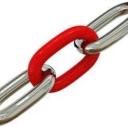Yahoo Answers is shutting down on May 4th, 2021 (Eastern Time) and beginning April 20th, 2021 (Eastern Time) the Yahoo Answers website will be in read-only mode. There will be no changes to other Yahoo properties or services, or your Yahoo account. You can find more information about the Yahoo Answers shutdown and how to download your data on this help page.
Trending News
Improper fractions help How does 2 1/4 convert to 9/4?
So I'm re workig through my old maths book and in the mid massive section/improper fractions and found a multiplication where 2 is next to 1 over or times 1 next to 2 over 3 (sorry I don't know how to phrase it) written kin da like 2 1/4 × 1 2/3 (which theneeds converts to) = 9/4 × 5/3 (9 is over 4 and 5 is over 3) I can figure out the maths after that. But I don't understand how 2 1/4 converts to 9/4 or 1 2/3 converts to 5/3? Can anyone explain step by step?
12 Answers
- peeveeLv 64 years ago
2 1/4 as improper fraction is 9/4.
2 * 4 + 1 gives the numerator 9 and the denominator remains 4.
The answer is 9/4.
- MICHAEL KLv 74 years ago
multiply 4 from the denominator to the 2 (whole number) to get 8 and then add the numerator 1, to the 8 for a result of 9 which then goes over the 4 for an answer of 9/4.
- JimLv 74 years ago
2 1/4 is actually 2 + 1/4
Multiply by 1 to convert the 2
2 (4/4) = 8/4
8/4 + 1/4 = 9/4
- How do you think about the answers? You can sign in to vote the answer.
- la consoleLv 74 years ago
To make addition (or subtraction) with fractions, it's necessary to have the same number at the denominator, i.e. the bottom of the fraction.
When the denominators are similar, then, you can add (or subtract) the numerators together.
…but only the numerators, not the denominators.
= 2 1/4
= 2 + (1/4) → you know that: 2 = 2/1
= (2/1) + (1/4) → to get the same number at the bottom, it's necessary to have 4
The first fraction is (2/1), and to get 4 instead of 1 at the bottom, it's necessary to multiply by 4.
If you multiply the bottom by 4, you have to multiply by 4 the top too.
= 2/1
= (2 * 4)/(1 * 4)
= 8/4
Restart:
= 2 1/4
= 2 + (1/4) → you know that: 2 = 2/1
= (2/1) + (1/4) → we've just seen that: 2/1 = 8/4
= (8/4) + (1/4) ← as the bottoms (denominators) are similar, you can add the top (numerators)
= (8 + 1)/4
= 9/4
1 2/3 converts to 5/3
= 1 + (2/3) → you know that: 1 = 1/1
= (1/1) + (2/3) → to get the same number at the bottom, it's necessary to have 3
The first fraction is (1/1), and to get 3 instead of 1 (at the bottom), it's necessary to multiply by 3.
If you multiply the bottom by 3, you have to multiply by 3 the top too.
= 1/1
= (1 * 3)/(1 * 3)
= 3/3
Restart:
= 1 2/3
= (1/1) + (2/3) → we've just seen that: 1/1 = 3/3
= (3/3) + (2/3) ← as the bottoms (denominators) are similar, you can add the top (numerators)
= (3 + 2)/3
= 5/3
- frank lynnLv 64 years ago
Okay, let s keep this simple. Let s convert the first one first. How many fourths are in 2? We know that 4/4 = 1. So, to make 2 into a fraction of fourths, we then multiply 2 x 4/4 = 8/4.
The mixed fraction 2-1/4 is a sum = 2 x (4/4) + 1/4. That is equal to 8/4 + 1/4. So add the two fractions to get 9/4.
Similarly for 1-2/3, we have 3/3 + 1/3 = 4/3. Multiply those two 9/4 x 4/3. Since the 4 s cancel, we 9/3, which simplifies to 3. That is the final answer.
- az_lenderLv 74 years ago
9/4 means 9 DIVIDED BY 4, which comes out to 2, with a remainder of 1.
5/3 means 5 DIVIDED BY 3, which comes out to 1, with a remainder of 2.
Another way to look at it is, 4/4 = 1, so 2 1/4 (which means two AND one-fourth) is the same as 4/4 + 4/4 + 1/4 = 9/4.
- MarvinatorLv 74 years ago
You divide each of the whole numbers into parts.
So, if there are 4 quarters in a whole number, 2 whole numbers would be 2 x 4 or 8
add to that the extra 1/4 and you get 9/4. The same can be done with the 1 and 2/3
1 whole number is made up of 3 'thirds'. Add to this the additional 2/3 and you get 5/3
- Anonymous4 years ago
2 1/4 converts to 9/4 because you take the denominator, 4, and multiply that to the non fraction number and then add the product into the numerator
4 x 2 = 8, 8 + 1 = 9 therefore it converts to 9/4
For example, 1 2/3 to 5/3
3 x 1 is 3 and 3 + 2 is 5, therefore 1 2/3 converts to 5/3
- 4 years ago
Basically, you multiply the denominator of the fraction times the whole number, in this case it's 2, and add that answer to the numerator. Which is 9 because 4 x 2= 8 and adding 1 is 9. Finally you just make 9 the numerator on top and put the previous denominator (4) on bottom.






